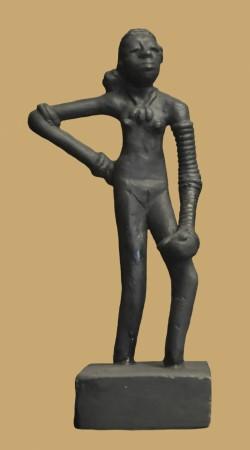
A new research paper published by the Indian Council of Historical Research's (ICHR) Hindi journal 'Itihaas' has claimed that Mohenjodaro's 'Dancing Girl' is Goddess Parvati, a proof that the people of the Indus Valley Civilisation worshipped Lord Shiva. The paper has been authored by retired Banaras Hindu University (BHU) professor Thakur Prasad Verma.
Scientists find the world's oldest water that may hold clues to alien life
The research paper, titled 'Vedic Sabhyata Ka Puratatva' (Archaeology of the Vedic Civilisation), stated that the people of the civilisation worshipped Lord Shiva, thereby reiterating what Right-leaning historians have also claimed that the 'Dancing Girl', which dates back to 2,500 BC, is a Hindu goddess.
Verma claims that the 'Dancing Girl' is Parvati because "where there is Shiva, there should be Shakti", a manifestation of the Goddess, though "till date, no one has identified any idol or statue of Parvati in Harappan Civilisation."
The paper also stated that several artefacts from Mohenjodaro prove that the people worshipped Lord Shiva during that time. Verma said that the iconic 'Seal 420' — a seal of a horned figure that sits in a yogic posture and is surrounded by animals — is proof that Shiva was worshipped. However, this has been subject to debate with archaeologist John Marshall saying in 1931 that he saw a "prototype" of Shiva while other historians interpreting it differently with some even saying that the figure is that of a woman.
Verma also said that the trefoil pattern on the shawl of another famous sculpture 'Priest King' also proves that the king worshipped a Hindu god since the pattern is similar to the Vilva or Bilva leaves that are used to worship Shiva in present times, the Indian Express reported.
Supriya Verma, a historian and a professor at Jawaharlal Nehru University (JNU), told the daily: "Till date, no archaeologist has ever interpreted the 'Dancing Girl' as a goddess, let alone Parvati. This particular artefact has always been seen as the sculpture of a young girl. It is difficult to say anything more than that. The elaborate terracotta female figurines were described by Marshall as mother goddesses, although he categorised some of the other terracotta female figurines as either toys or as being associated with magic."














